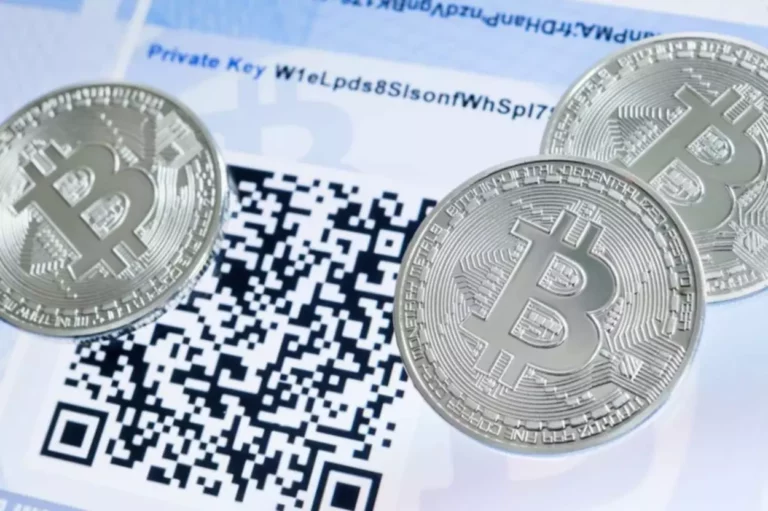FinTech
What Are Liquidity Pools? Get Started With Bitcoin Com
When a consumer supplies liquidity, a smart contract points liquidity pool (LP) tokens. AMMs make the most of these liquidity swimming pools to calculate prices based mostly on the ratio of tokens in the pool, making certain fair and efficient trading. They take away the need for traditional order books and centralized brokers, permitting customers to trade immediately with the protocol.
Build your id as a certified blockchain skilled with 101 Blockchains’ Blockchain Certifications designed to offer enhanced career prospects. Want to get an in-depth understanding of crypto fundamentals, trading and investing strategies? Become a member and get free access to Crypto Fundamentals, Trading And Investing Course.
They are created when users lock their cryptocurrency into good contracts that then permits them to be used by others. Yield Farming Platforms — have emerged as a preferred development in DeFi, permitting customers to earn passive revenue by lending or providing liquidity to numerous protocols. Users can earn interest and borrow in opposition to their collateral by depositing belongings into a Compound.
There has never been a better time for people interested in exploring and taking part in liquidity pools. Engaging with these decentralized financial devices allows people to tap into diverse investment opportunities, no matter geographical or monetary constraints. By actively participating in liquidity provision, users contribute to the DeFi ecosystem’s progress and profit from the potential rewards and returns.
Liquidity pools are crucial in facilitating seamless trading and funding in DeFi protocols. Liquidity is available by pooling funds from a quantity of participants, making certain uninterrupted buying and selling and decreasing slippage. Likewise, establishing cross-chain liquidity necessitates trustless mechanisms that facilitate efficient asset swaps, ensuring liquidity flow throughout numerous networks. Addressing these challenges will unlock the total potential of decentralized finance, fostering an inclusive and interconnected crypto ecosystem. Prior to the creation of liquidity supplier tokens, all belongings getting used throughout the Ethereum ecosystem were inaccessible during their interval of use.
What Is A Liquidity Pool And The Way Does It Work?
They are the backbone of DeFi platforms, bringing collectively folks keen to supply their belongings and folks trying to trade or borrow these property. The advantage of a liquidity pool is that it doesn’t require a buyer to match with a vendor for a transaction to occur. Instead, the system mechanically uses the tokens in the liquidity pool to take the alternative facet of a trade.
- You can think of liquidity swimming pools as crowdfunded reservoirs of cryptocurrencies that anybody can access.
- Its distinctive automated market maker (AMM) mannequin uses sensible contracts to facilitate trades, with liquidity providers pooling their tokens into liquidity reserves.
- The Keepers of KeeperDAO and JITU utilize liquidity offered by the 5 completely different pools for facilitating flash loans.
- The precise amount earned by any liquidity provider will depend on the dimensions of the pool, the buying and selling exercise, and the charges which are charged.
- Impermanent loss, good contract vulnerabilities, and market volatility are among the challenges that liquidity suppliers should contemplate and manage.
- On Uniswap, these tokens are referred to as either pool tokens or liquidity tokens.
Slippage is most typical in periods of upper volatility, and also can happen when a large order is executed but there is not sufficient quantity on the chosen price to maintain the bid-ask unfold. A liquidity pool is a set of cryptocurrencies used to facilitate transactions on a decentralised exchange. The assets in the pool are analogous to the lemonade machines, and the customers who supply those belongings are like the buddies who invested within the business. The quantity a liquidity provider can earn from offering liquidity to a pool can vary based on a variety of different factors. To mitigate these dangers, LPs make use of various strategies like diversifying their portfolios, utilizing hedging methods, and actively monitoring market situations.
AMMs make use of mathematical algorithms to mechanically execute trades between a quantity of assets by making certain that there’s a steadiness between the supply of tokens in the liquidity pool. A liquidity pool is a group of funds locked in a smart contract on a decentralized finance (DeFi) network. It is a cornerstone of DeFi because it supplies a supply of liquidity for users to exchange https://www.xcritical.in/ and work together with varied digital assets. This know-how features by way of a mechanism that enables customers, or liquidity suppliers (LP), to pool their digital property in a DEX’s smart contract. In exchange, the LPs receive sure rewards (typically within the type of trading fees) in proportion to the liquidity they supplied.
They provide the liquidity that’s necessary for these exchanges to perform, a bit like how companies transform cash into debt or equity via loans. This protocol optimizes liquidity provisioning by utilizing convex tokens, unlocking further rewards and incentives. By offering a seamless expertise and selling sustainable liquidity, Convexity Protocol has gained recognition as a leading platform inside the thriving ecosystem of liquidity protocols. First, a wise contract is written, defining pool functionalities like token swapping and costs.
Arithmetic Underflow And Overflow Vulnerabilities In Good Contracts
AMMs additionally enable for larger transparency and decentralization as they operate on blockchain networks. However, AMMs may have limitations relating to price slippage and dealing with excessive market conditions, as they rely on predefined mathematical formulation quite than human judgment and intervention. Aave is an open-source, non-custodial cash market platform that offers a big selection of debt-based products in a decentralized fashion. Interestingly, Curve doesn’t offer a local token, though a CRV token may not be far-off.

Today, you probably can “farm for yield” — maximize earnings — by moving LP tokens out and in of various DeFi apps. James has 15+ years of expertise in applied sciences ranging from Blockchain, IoT, Artificial Intelligence, and Augmented Reality. He is dedicated to helping enterprises, in addition to individuals, thrive in today’s world of fast-paced disruptive technological change. MoonPay’s widget provides Liquidity Pools in Crypto a fast and straightforward method to purchase Bitcoin, Ethereum, and more than 50 other cryptocurrencies. For example, for example you wish to create a pool that contains the trading pair ETH/USDC.
Yield Farming And Liquidity Pools
Participating in these incentivized liquidity swimming pools as a supplier to get the maximum amount of LP tokens known as liquidity mining. Liquidity mining is how crypto exchange liquidity providers can optimize their LP token earnings on a selected market or platform. The non-custodial feature of AMM platforms is key to being a half of the decentralized finance ecosystem.
The measurement of a consumer’s share within the pool is decided by how much of the underlying asset they have provided. So, if a pool has $100 price of property and a user has provided 10% of these assets, then that user would personal 10% of the pool and would earn 10% of the rewards which may be distributed. Liquidity pools are at the coronary heart of DeFi because peer-to-peer trading isn’t attainable without them. Unlike traditional exchanges that use order books, the worth in a DEX is often set by an Automated Market Maker (AMM). When a commerce is executed, the AMM makes use of a mathematical formulation to calculate how a lot of each asset within the pool must be swapped to find a way to fulfill the commerce.

In conventional finance, money is seen as the most liquid asset, as a end result of you possibly can simply exchange it for gold, stocks, bonds, and other belongings. In the broader crypto space, bitcoin (BTC) is at present the most liquid asset, because it’s accepted and tradeable on almost every centralized exchange. Aave is a decentralized lending and borrowing protocol that allows customers to earn interest on deposits and take out loans utilizing cryptocurrency as collateral. It utilizes a novel flash mortgage characteristic, permitting customers to borrow with out requiring collateral if the funds are returned throughout the similar transaction.
What Is A Crypto Liquidity Pool?
This is especially true in terms of DeFi and we now have set out a few dangers under that you want to know about. Join over 18 million learners to launch, switch or build upon your career, all at your personal pace, across a variety of topic areas.
Learn about Lightning Network, one of the promising scaling solutions for Bitcoin to make the blockchain cheaper and faster. What you have to know about how Layer-1 blockchains work, and why they can’t match the speeds of centralized payment techniques. Traditionally, you would have to purchase the equal worth of property and then manually put them into the pool. Seasoned copywriter with a centered expertise in crypto and fintech, adept at translating advanced business jargon into clear, participating content.
This kind of liquidity investing can routinely put a consumer’s funds into the very best yielding asset pairs. Platforms like Yearn.finance even automate steadiness threat alternative and returns to maneuver your funds to varied DeFi investments that present liquidity. Uniswap, a decentralized exchange protocol built on Ethereum, revolutionized the world of liquidity provision. Uniswap allows users to trade ERC-20 tokens directly from their wallets by eliminating intermediaries. Its distinctive automated market maker (AMM) model uses good contracts to facilitate trades, with liquidity suppliers pooling their tokens into liquidity reserves.
With superfluid staking, these LPTs can then be staked so as to earn extra rewards. So not solely are users earning from the buying and selling activity within the pool, they’re additionally earning returns from staking the LPTs they receive. The main objective of liquidity swimming pools is to facilitate peer-to-peer (P2P) buying and selling on DEXs. By providing a steady supply of consumers and sellers, liquidity pools ensure that trades may be executed rapidly and efficiently.
With its customizable weightings and self-adjusting mechanisms, Balancer allows customers to rebalance their portfolios automatically, making certain optimal performance. However, slippage, the distinction between the expected and precise execution price, can influence trades on these decentralized exchanges. High slippage arises when liquidity is limited, leading to potential losses or reduced gains for merchants. Understanding slippage and actively managing liquidity swimming pools are essential for optimizing buying and selling methods on fixed product platforms. Furthermore, DeFi liquidity pools have facilitated the creation of innovative financial instruments, such as decentralized exchanges and lending protocols.
Case Studies And Real-world Applications
Market volatility may find yourself in impermanent Loss, the place the worth of belongings in a liquidity pool fluctuates compared to holding them outside. Additionally, smart contract vulnerabilities, hacking dangers, and sudden modifications in market circumstances can expose liquidity providers to potential monetary losses. An different means to provide liquidity is through using a market maker, an agent who stands ready to purchase and sells certain property at all times, thereby providing liquidity to the market. In DeFi, there exist centralized exchanges, similar to Binance (which is a firm), that act as market makers. However, one of the exciting new elements of DeFi is the replacement of a centralized market maker with a decentralised counterpart.
